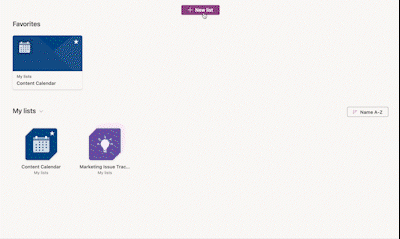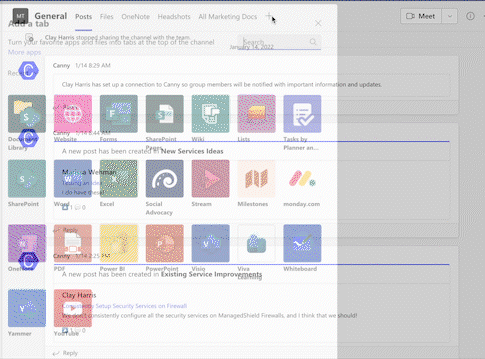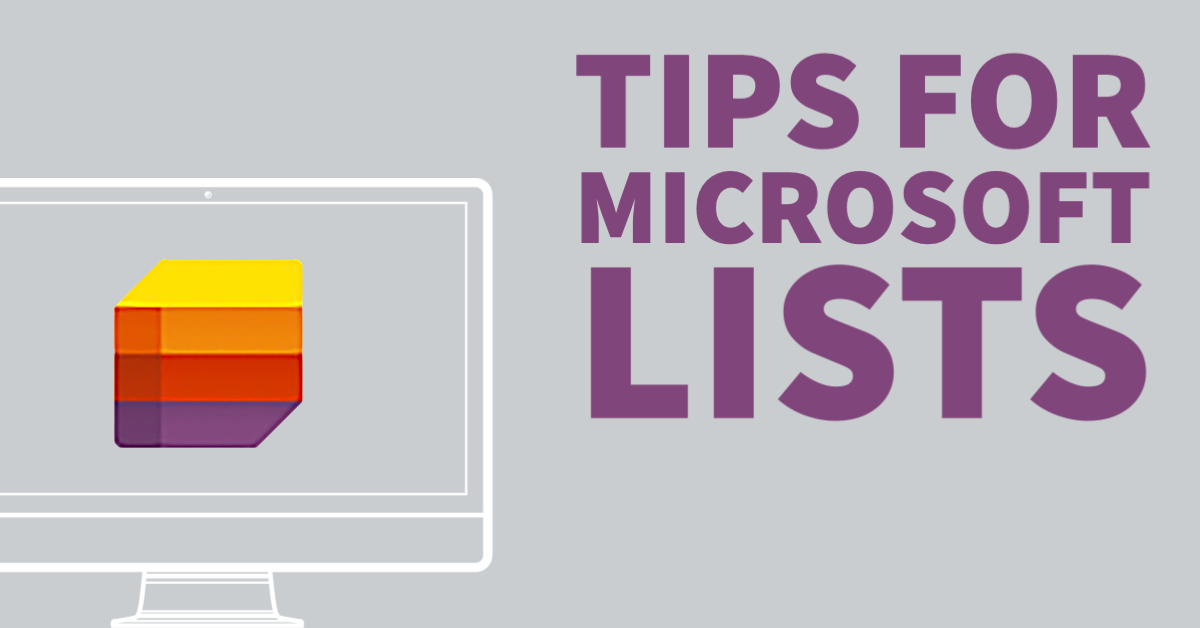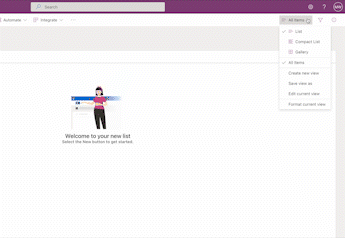Lists are great when they’re easy to find, follow, and track. They’re even more useful when you can use them to collaborate with your team to stay on track.
Whether you’re new to the tool, or have been using it a while, Microsoft Lists can be used in a variety of different scenarios. Tracking issues, planning event itineraries, creating checklists, and performing team evaluations are only a few examples.
Even if you’ve used the tool before, there may be a few hidden features you haven’t seen. Below we’ve compiled our top 5 tips for making the most out of Microsoft Lists.
Tip #1: Favorite a list
We’ll start simple. Being able to quickly access what you need is key to staying productive throughout your workday.
Once you’ve created multiple lists, it may get more difficult to keep up with them all. There likely will be some lists you use on a regular basis, whereas others you may only need for a one-time occasion.
For the lists you need to access frequently, you can favorite them to make them readily accessible. Once favorited, those lists then appear at the top of the Lists home page, both on the webpage and the app. Of course, you can always unfavorite a list at any point to remove it from favorites.

Tip #2: Create lists using templates
When you start to create your list, you have the option to use one of the eight, pre-made templates that the tool provides.
- Issue Tracker
- Employee Onboarding
- Event Itinerary
- Asset Manager
- Recruitment Tracker
- Travel Requests
- Work Progress Tracker
- Content Scheduler
While these templates are labeled for a fairly specific purpose, they can be edited and altered to fit your specific needs.
You can also use your own previously-created lists as templates. If there is an existing list of your own that you’d like to copy with the same format and structure, you can do so in the first step of the creation process.

Tip #3: Add your list to Teams
Your team likely already uses Microsoft Teams to chat with fellow co-workers and access files through the channels in your organization. If they’re already spending a great deal of time in the app, it makes sense to also include any relevant list within the app as well.
By adding lists directly into Teams channels, your team is able to stay organized and track what is needed all in one place.
As an added bonus, you can also edit lists directly within Teams. With this feature, you don’t have to leave the Teams app when you need to make changes to your lists.

Tip #4: Use the calendar view
When it comes to viewing information, everyone has their own preference. Some prefer a more standard, vertical list view, whereas others may prefer a calendar view.
When you’re creating a list, it will automatically populate to the standard view. However, if you’d prefer to see your information laid out on a monthly basis, you can create a new view to do so.
This view comes in handy when tracking events or specific milestone dates, as you are able to see an entire month at a time.
Tip #5: Mention colleagues
Whether you’re using Microsoft Lists on the web, or through the app in Teams, you’re now able to directly mention a fellow team member while working on a List.
Maybe you need a co-worker to input information, or maybe you need approval before continuing work on a list – whatever the reason is, by using the comment section on a list, you’re able to @mention a colleague that will automatically send them an email notification or Teams notification, depending on which version of Lists you are using.
The notification includes a direct link to the comment in which they were mentioned, allowing your team to get tasks completed quickly and efficiently.

Help your team stay productive.
Keep your workday simple and efficient using Microsoft Lists.
The easy collaboration between fellow team members and structured progress-tracking provided by Microsoft Lists helps lead to tasks being completed in a timely and organized manner.



